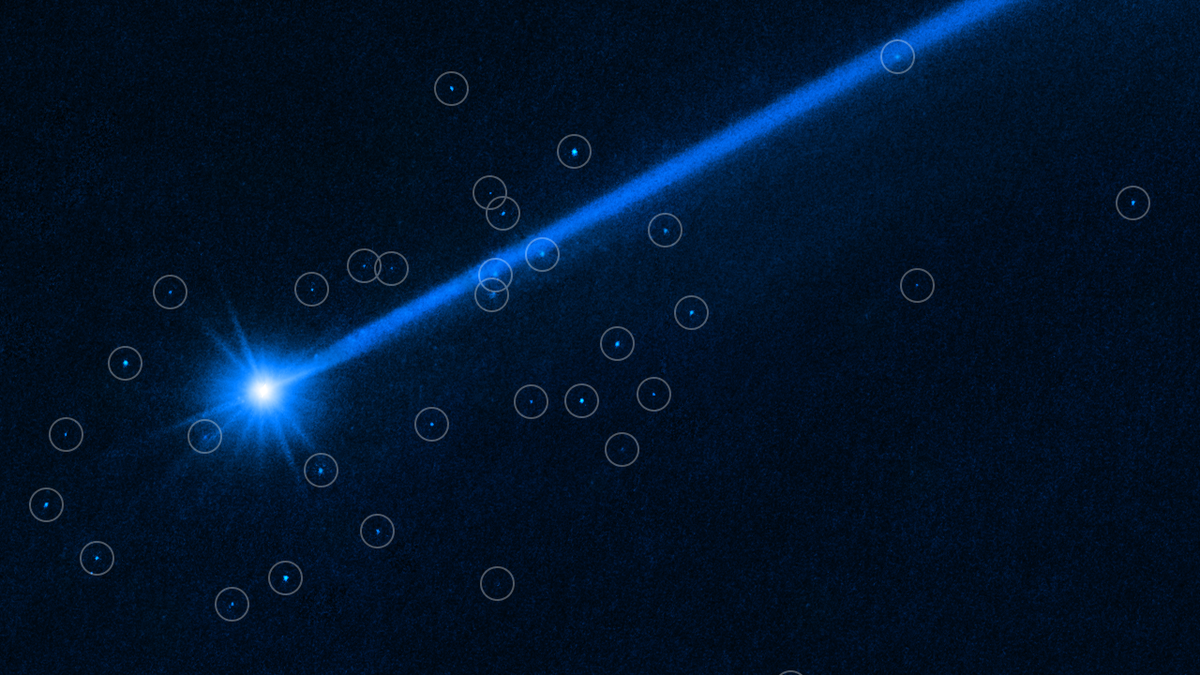Hubble telescope spies cloud of space rocks created by DART asteroid impact (photos)
By Monisha Ravisetti published about 2 hours ago
NASA's planetary defense prototype seems to have generated a bit of cosmic chaos.

An image of the impacted asteroid, Dimorphos, with drawn-in circles arouns the areas where boulders have been detected. (Image credit: NASA)
Thanks to some stunning Hubble Space Telescope observations, scientists continue to be surprised by NASA's DART mission – this time in the form of a swarm of boulders that appears to have been knocked loose from the targeted asteroid upon impact.
In September of last year, NASA launched a mission that, on its surface, might appear to contradict everything we know about space exploration. The agency launched a spacecraft directly into an asteroid. It did not survive. But this metal adventurer, named DART, which stands for Double Asteroid Redirection Test, had a very important purpose: It was NASA's first step in developing an ambitious planetary defense system.
In a nutshell, the goal of DART was to see whether the craft's crash-landing on a relatively small asteroid named Dimorphos would alter its orbit around a larger asteroid, Didymos. Not only was the mission a resounding success, but it also appears to be the gift that keeps on giving. We've since learned quite a bit about space rock impacts and how, exactly, a futuristic Earth defense mechanism might work one day.
And on Thursday (July 20), NASA announced that DART has provided us with some intriguing information yet again from beyond the grave. By tapping into the Hubble Space Telescope's powerful optics, astronomers found that the probe's impact on Dimorphos – which occurred while it flew at about 14,000 mph (22,530 km/h) – produced a "swarm of boulders." And it's possible, the agency says, that these shards came from the asteroid target itself.
More:
https://www.space.com/hubble-telescope-nasa-dart-mission-asteroid-space-boulders
